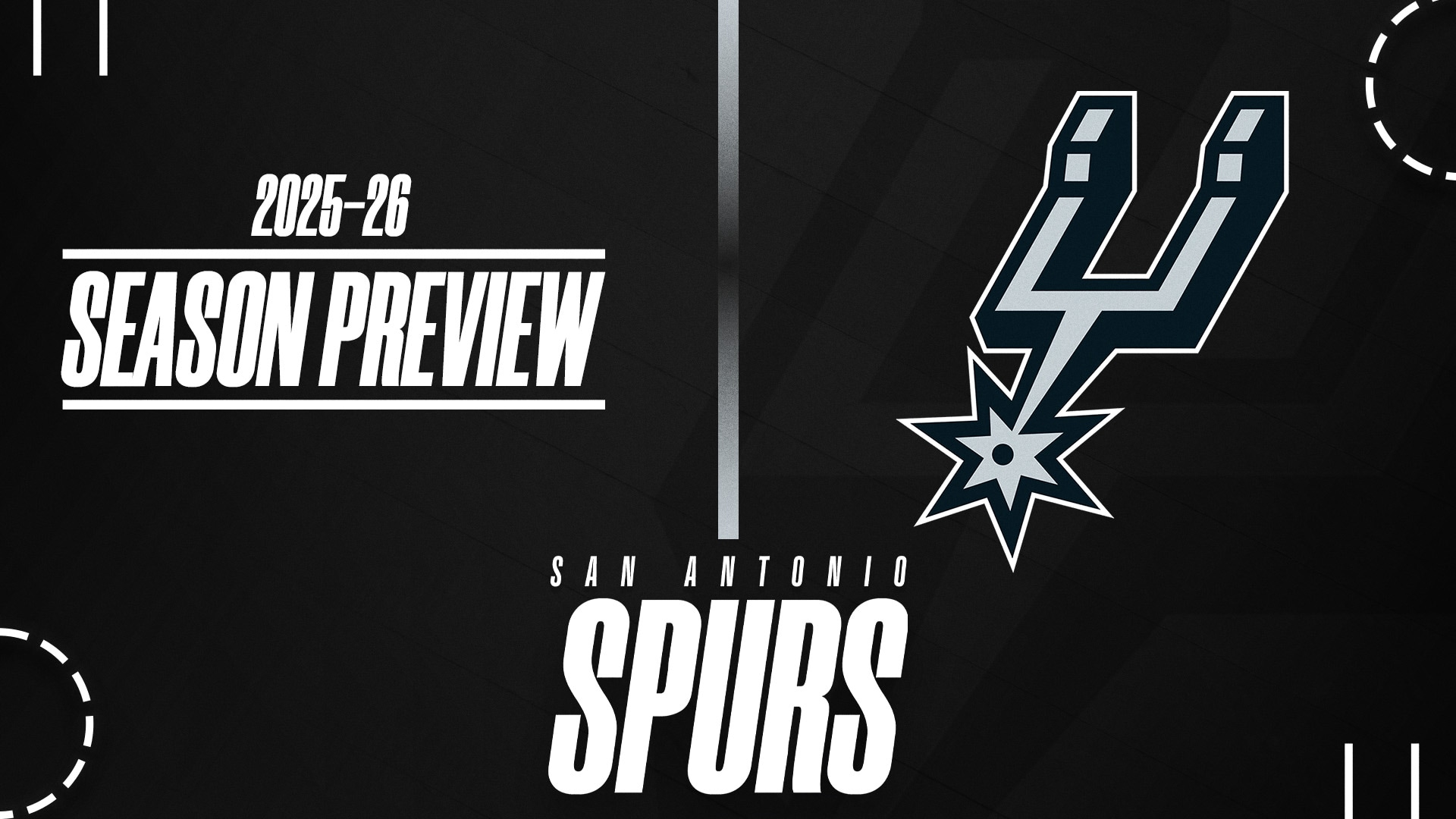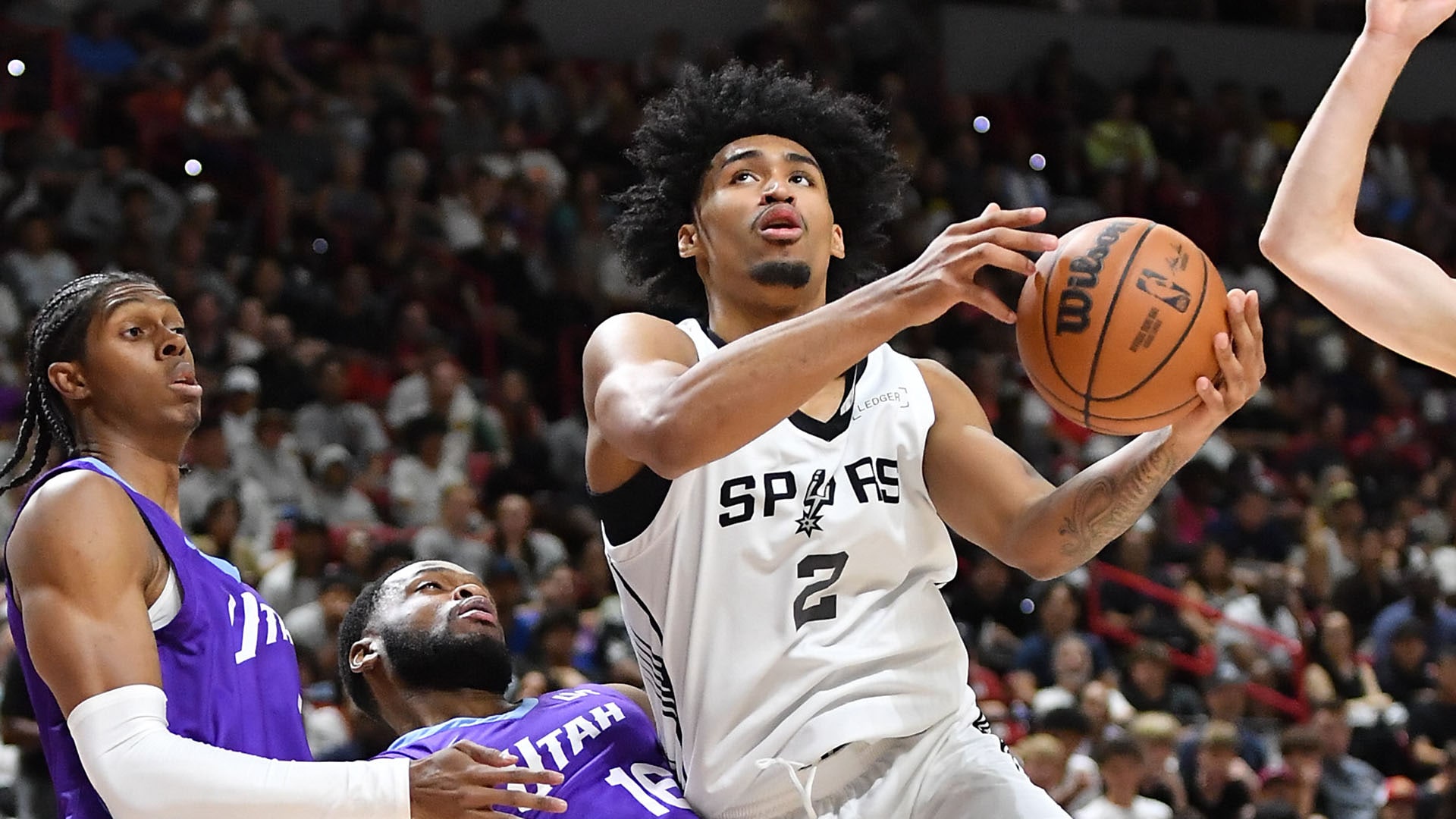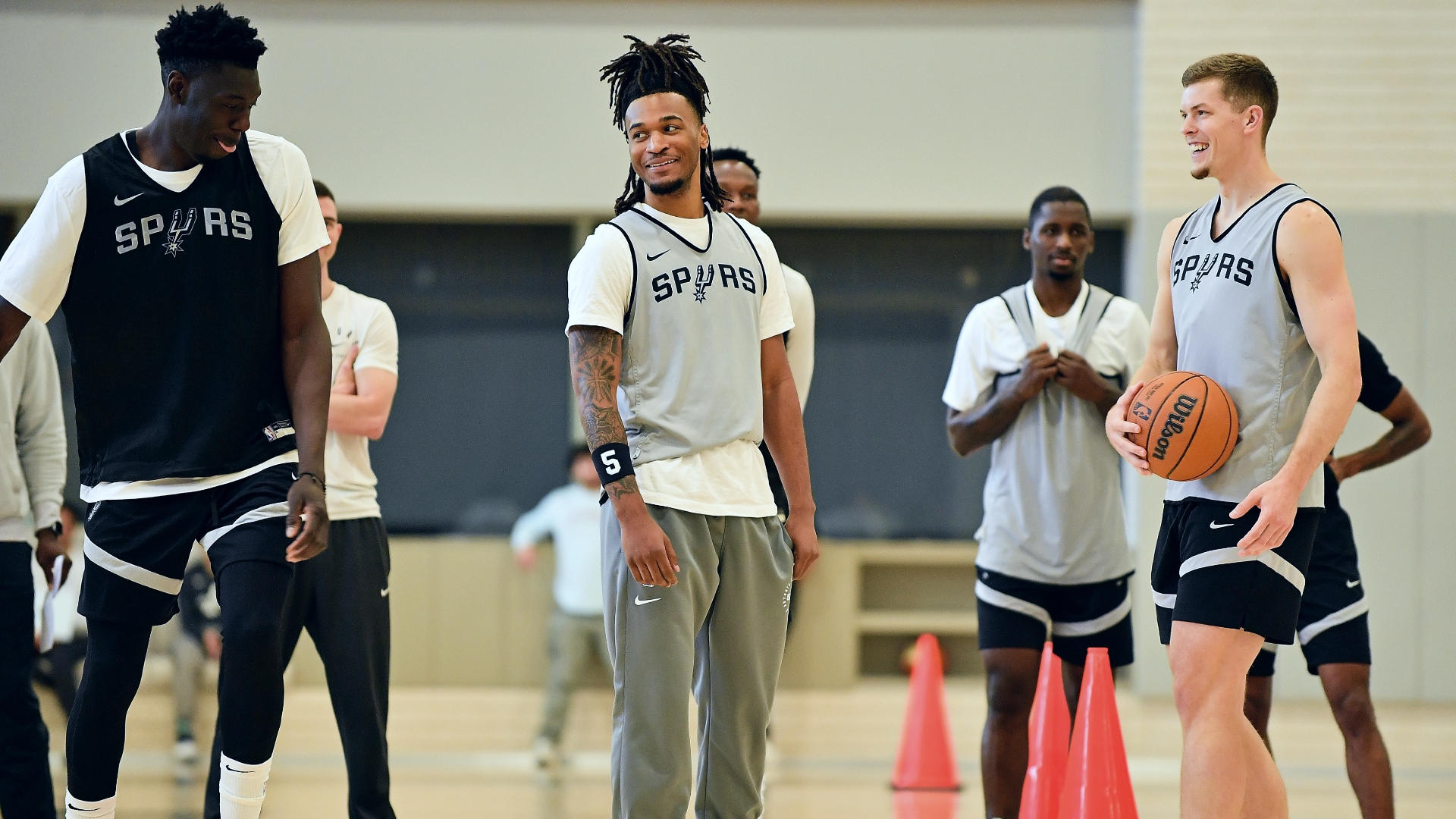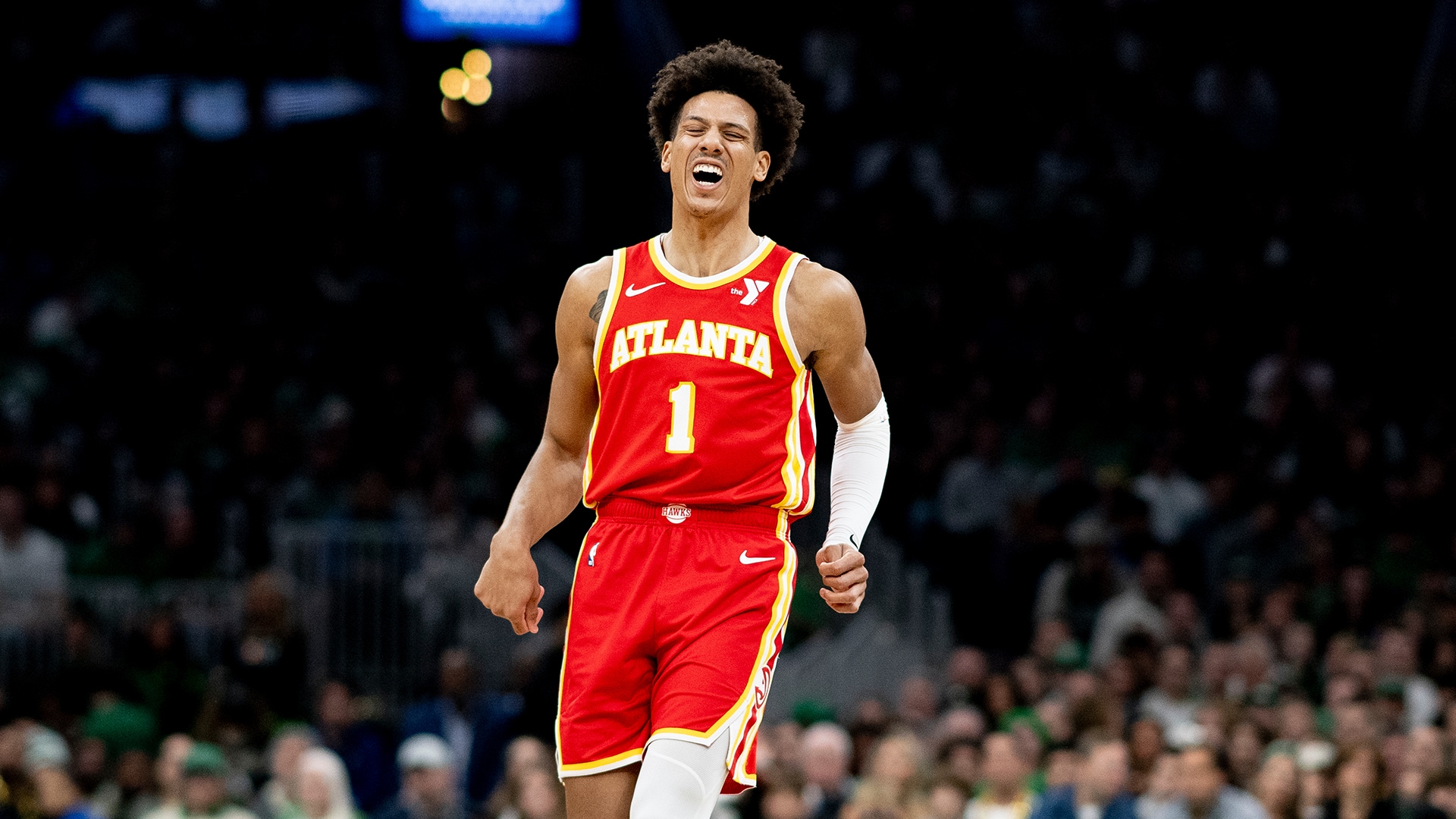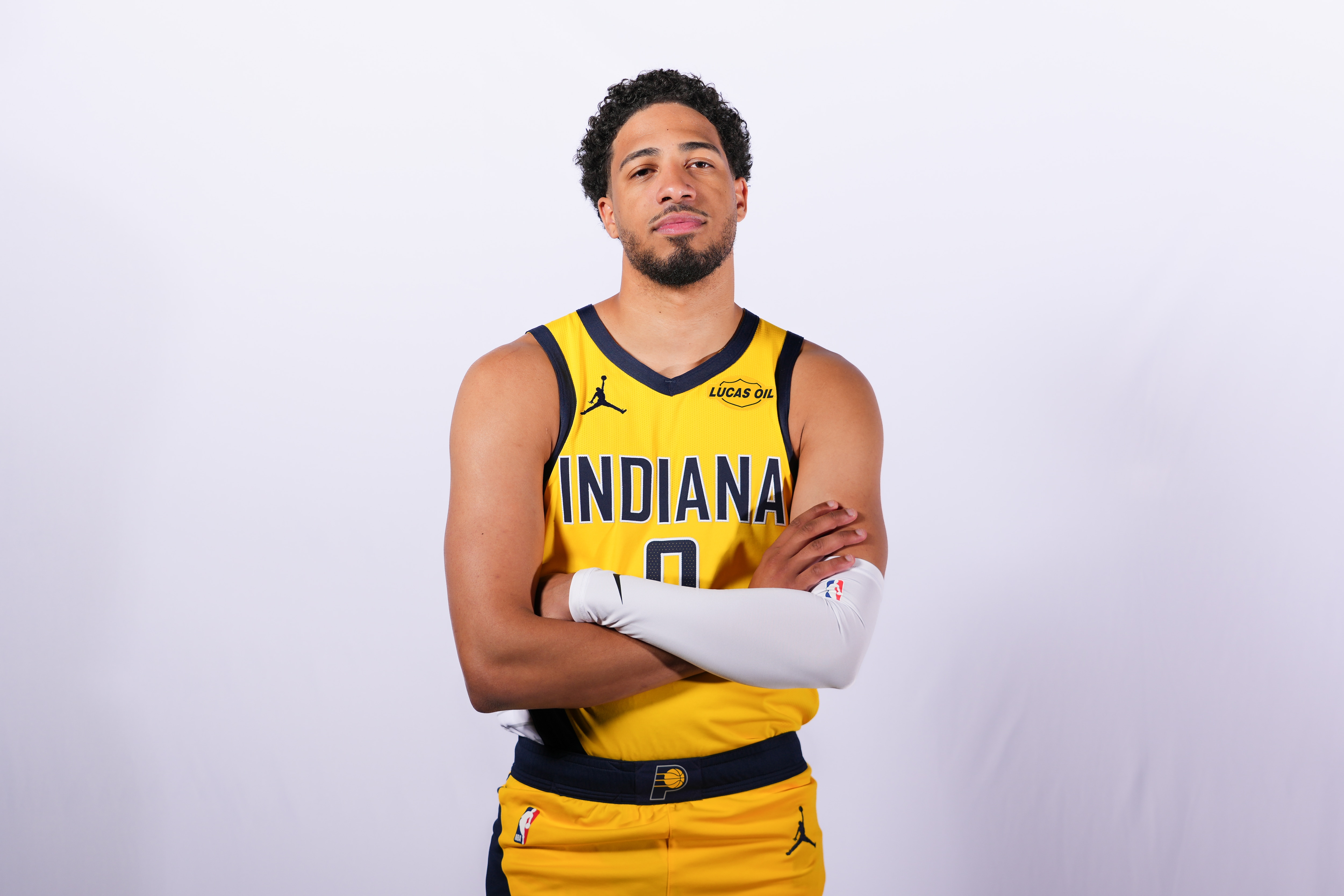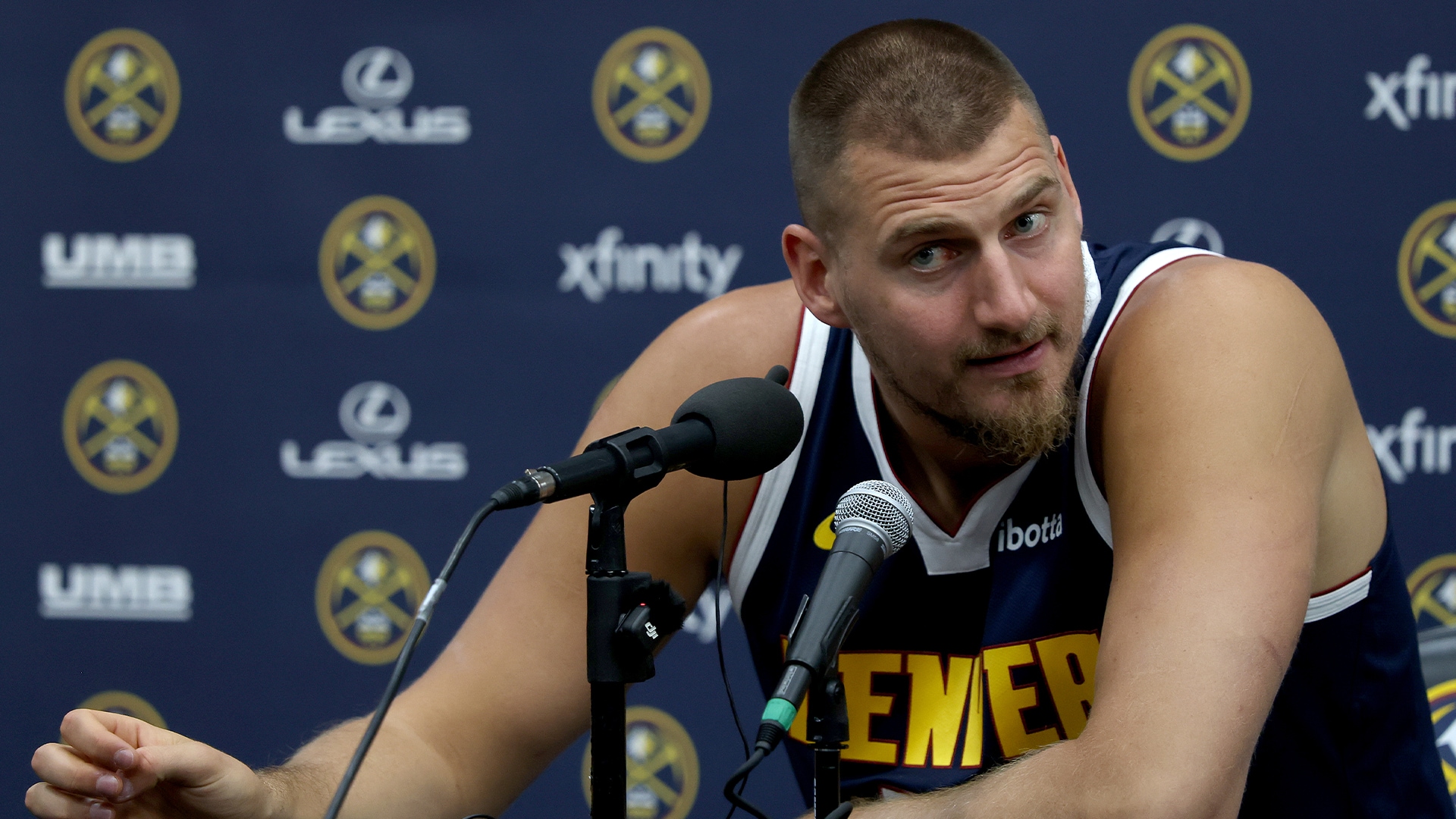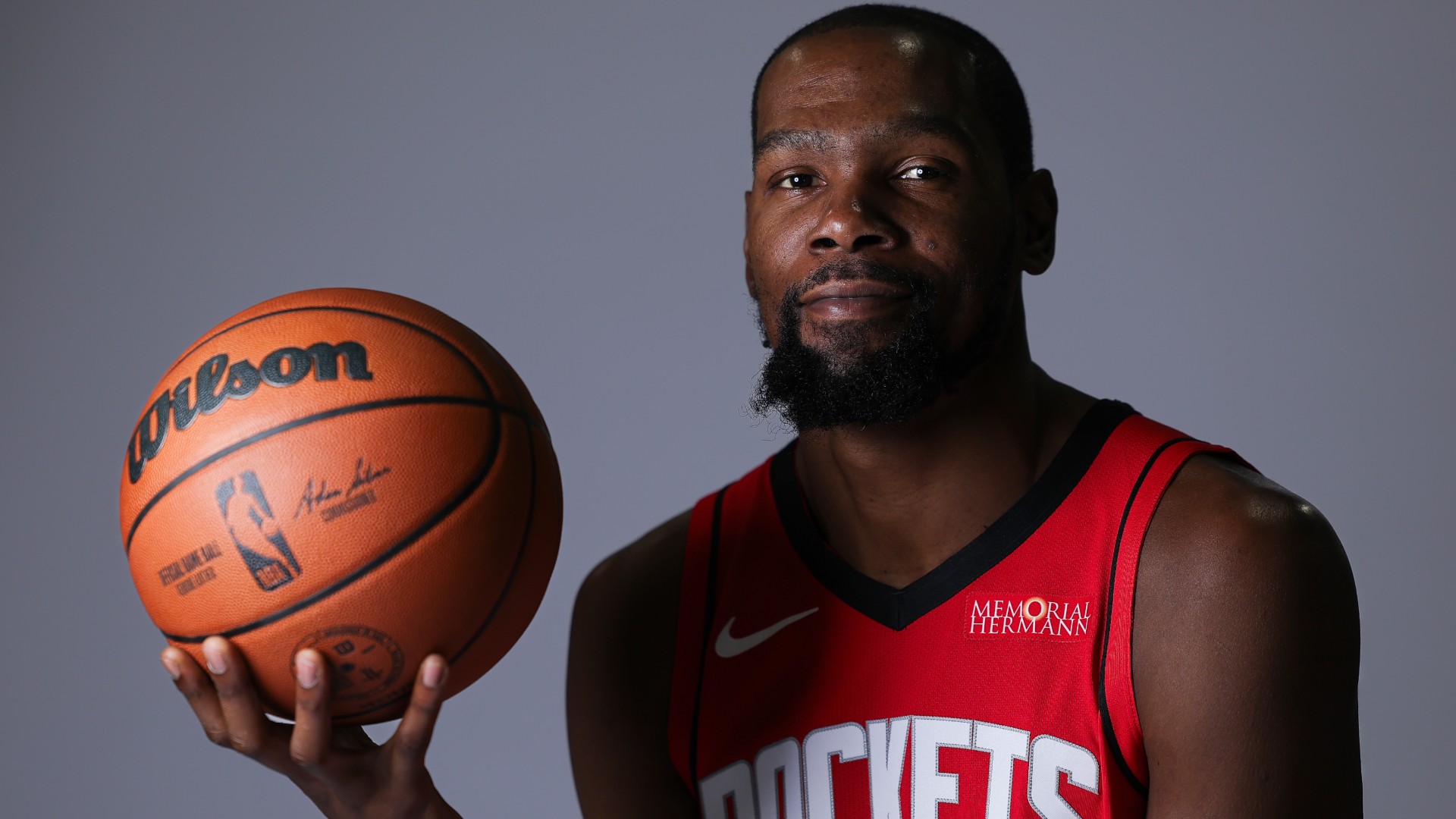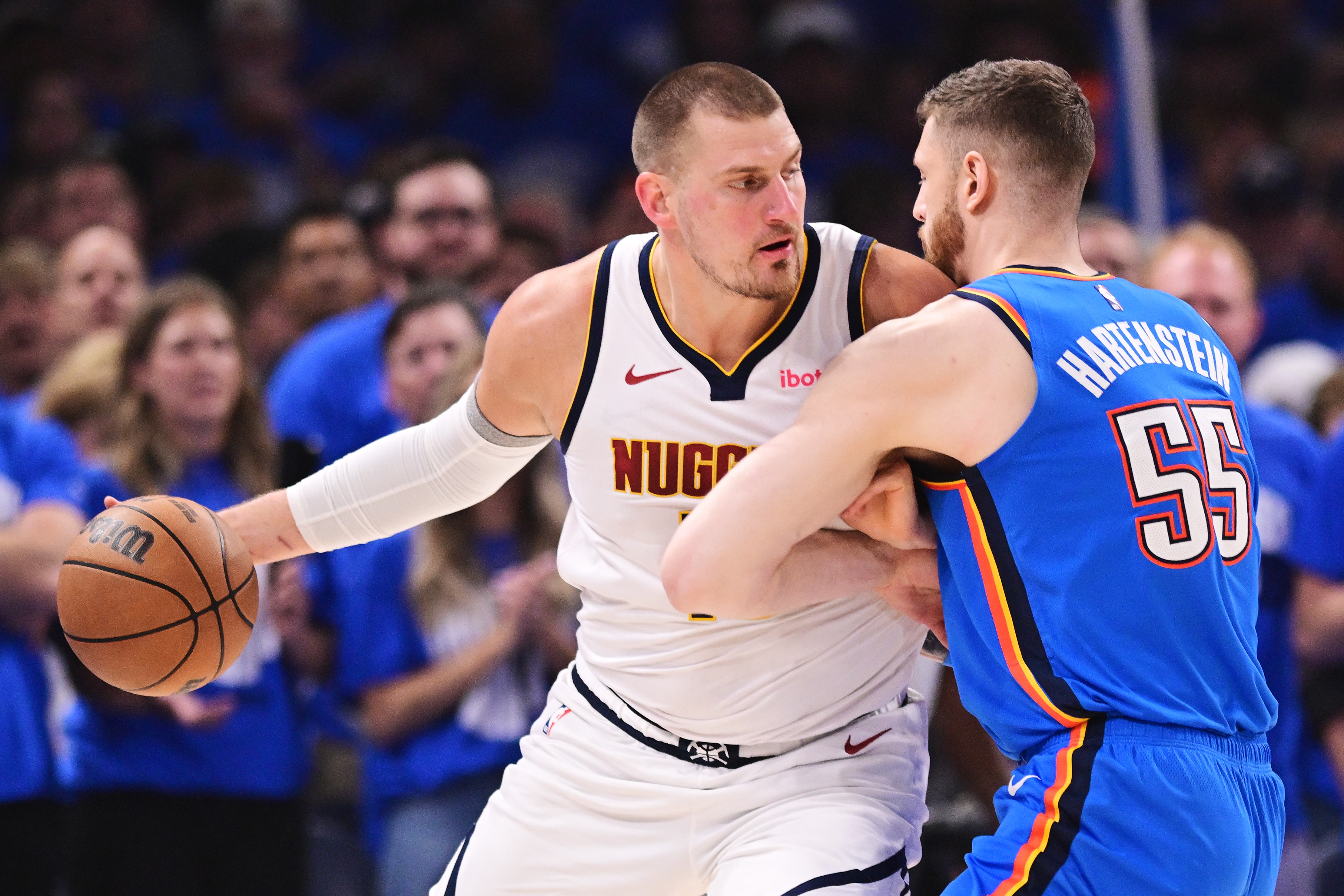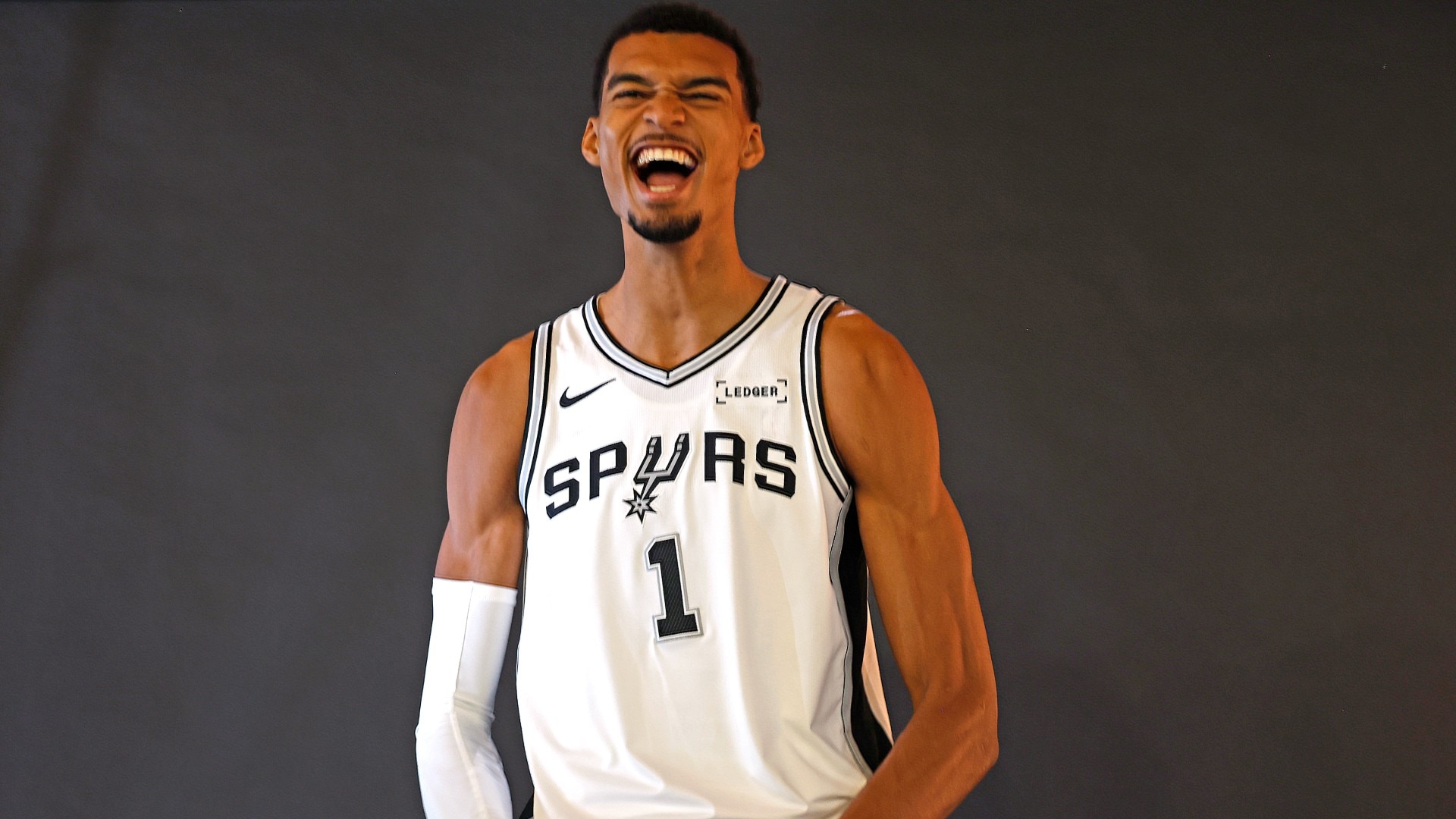
Editor’s Note: Read more NBA coverage from The Athletic here. The views on this page do not necessarily reflect the views of the NBA or its teams.
***
SAN ANTONIO — As Victor Wembanyama swatted away another one of his shots, something dawned on Julian Champagnie. The Spurs wing just watched his teammates take turns trying to score on their star center, then going back down the other end of the floor to try to do it again.
One by one, they went at Wembanyama and met the same fate as many players across the NBA. But they got to catch their breath in between as they waited their turn, strategizing how they might get past him.
There was just one player who didn’t get a single break: Wembanyama.
The drill is simple. He defends a one-on-one sequence against every player in the gym without a breather. Once he’s taken everyone on, he sprints down to the other end of the court and goes right back into it.
“I don’t think I’ve ever seen someone work out like that,” Champagnie told The Athletic. “It’s crazy to see.”
After a blood clot ended his season early last February and jarringly snapped things into perspective, Wembanyama lived life to the fullest this summer. The doctor visits, the games watching from the sideline, it all got to him. With basketball and health suddenly taken away, he embarked on a path across the world to find himself.
When Wembanyama returned, he went to work with a vengeance. “My training this summer, it was brutal,” he said. Hence, the defensive drill from hell.
“This summer, I chose to do something much more violent,” Wembanyama said at Spurs media day Monday. “Maybe that takes away from some time I can spend on shooting the basketball, but it doesn’t matter. I wanted to get my body back.”
The former Rookie of the Year and 2023 No. 1 overall pick has physical gifts the likes of which we’ve never quite seen. He is now listed at 7-foot-4 in socks. Players of his size don’t do the things he does. Wilt Chamberlain may be the only other player who ever owned the sky in this manner, and Kareem Abdul-Jabbar is the only player who matched Wembanyama’s points, rebounds, assists and blocks per game from last season.
But ever since Wembanyama was an adolescent, he has been locked in a battle against history and time. It was apparent as a teenager he was growing to remarkable heights, and taking care of his body was going to be a tall task. He isn’t a plodding center with predictable movement patterns. His game is still a mystery that he is solving while we all watch.
To even get to this point required a complex physical training program that took off with his major growth spurt. When he entered the league, there were some questions about how his body would hold up to the NBA’s physicality. He alleviated those concerns in his first two seasons until his deep vein thrombosis brought an entirely different roadblock into the picture. For all the work Wembanyama did to maximize his career, this came out of nowhere.
He spent the spring going to hospitals, confronting the mortality of his career and even his life. The man who has tried to outwork everyone to take care of his anomalous body faced a dangerous anomaly anyway. After the clotting issues were relieved and he was cleared to travel again, he decided to get away from all the pain and frustration of his situation.
His journey to regain control started in China and Japan. He ventured to a Shaolin temple in Zhengzhou, China, to practice Chan meditation and Shaolin Kung Fu. It’s a place to find one’s self, where you connect with cultures that center on the gratitude of life’s nuances. The smallest connections fortify the biggest understandings.
“It makes you understand lessons that nothing else could have made me understand,” he said.
Wembanyama explained how visiting China and Japan expanded his vision of the world and helped him better understand people. When his body and, therefore, his sense of mortality experienced such a shock, it was important to redefine his sense of self and understanding of others.
“The traumatic experience (is) very much linked to all the stuff I’ve done in the summer,” Wembanyama said. “There’s also a big feeling that life isn’t forever and there are some experiences we’re going to miss (out) on. It’s inevitable. But I’m going to miss (out) on the least that I can. I want to experience the most and this is something that I wanted to do.”
Returning from a moving journey like this can make American life feel surface-level in comparison. But Wembanyama arrived stateside reinvigorated with purpose.
He was fueled with the desire to conquer his situation, and not just by working harder than before. China and Japan opened his already curious palate to all sorts of new experiences around his game.
“For someone of his age, he is so intentional on the variety of ways that he tries to improve as a player and a person,” Spurs head coach Mitch Johnson said. “It’s really something I’ve never witnessed or experienced in my time.”
Upon his arrival back in Texas, Wembanyama visited Houston to explore NASA’s Johnson Space Center and the headquarters for the Axiom Space station. Sitting at the Spurs’ media day podium Monday, the man known as “The Alien” fondly recalled his encounter with Peggy Whitson, explaining how the astronaut has spent the most time in space of any American and any woman worldwide at 695 days.
“Just like a kid, seeing the machines and the aircraft, everything that’s a replica of what’s actually in space or going to space, that was incredible,” he said.
From the court to the cosmos, Wemby’s got game 🏀🚀
NBA star @Wemby, Victor Wembanyama stopped by NASA’s Johnson Space Center for a tour that included the Vehicle Mockup Facility, Mission Control, and a ride in a lunar rover.
Whether it’s dominating the paint or geeking out… pic.twitter.com/EpfrgfgzHc
— NASA's Johnson Space Center (@NASA_Johnson) August 29, 2025
Wembanyama’s captivation with the intricacies of space travel was apparent. His curiosity is not just attached to basketball or a trauma response to the bizarre experience of having a blood clot at 21 years old. It is the root of Wembanyama’s greatness.
When his rehab finally progressed enough over the summer to return to game action, his curiosities led him to teammate Harrison Barnes. He wanted to join the veteran wing’s workouts in Los Angeles with skill trainer Noah Laroche, who put them through a two-week session using the Constraints-Led Approach.
The CLA replaces traditional drills with live-action training, forcing Wembanyama to do everything through a game-like scenario. This trains the brain and body to constantly seek out the optimal solution to each moment rather than fall back on pre-scripted moves that are easier for the defense to predict.
“Vic is big on learning,” Champagnie said. “So anything that Noah would tell him, he’s picking up. He was trying to be better, do better.”
The CLA trains players to find a shared understanding of principles of play, teaching permutations of actions that can correspond to other actions. The better players are at reading the game, the more easily they can find opportunities — known as affordances — to create advantages.
Ask Barnes about one particular affordance on a play, and he will spend the next minute rattling off a 10-step sequence that can flow from there. For example: If one is standing on the left wing and a teammate drives the right wing, the left-wing player will eventually get the ball off a kick-out pass and drive toward the middle based on a convoluted set of defensive rotations they can anticipate.
Change one variable slightly in the defensive pattern, and Barnes can give you an entirely different solution. The CLA is not about learning the playbook, but learning the sport at its essence so that you are not constrained by the limitations of a scripted play.
By the second week, Wembanyama told LaRoche his body was beginning to understand the movements of the CLA. As he dropped his preconceived notions of how to play, his body began to find itself again.
“It was easy for him. He knew all the spots, he knew where to go,” Champagnie said. “It wasn’t as forced. Obviously, Vic is Vic, he’s a freak of nature. Some of those things you can’t teach. I think he just played well within the flow of the game. It just shows him a different way of playing the game while still being able to do what he does.”
For Champagnie, what stands out is the discipline. Wembanyama’s habits are intense and consistent every day. Waking up early, leaving late, coming back, leaving late again, he does two-a-days and he makes the rest of the group last the whole day. Champagnie saw Wembanyama performing that routine five, six times a week when most players could barely muster it more than a few times before the weekend hits.
Now that training camp has arrived, the impression Wembanyama left in Los Angeles is making an impact in San Antonio.
“At his age, it’s eye-opening to see somebody come in and demand excellence and demand greatness,” said Spurs newcomer Lindy Waters III. “He can’t do that without putting himself on that pedestal and making sure that nobody can come at him and say anything. … It’s easy for him to demand that and it makes me want to work harder.”
Now that the season is almost here, Wembanyama feels reinvigorated.
“I’m so much more under control and my conditioning has gotten so much better, but that comes at a price and what I’ve done this summer is world class,” Wembanyama said. “Even in the field of professional sports, I don’t think many people have trained the way we’ve trained this summer.”
That’s why Johnson — in his first season as the head coach after filling in for Gregg Popovich following the Hall of Famer’s stroke last season — is not afraid to say he wants the team “to be in the reflection of Victor.”
“I just really am in awe sometimes of just the levels that he goes (to),” Johnson said. “The things he thinks about that may be a small nuance, but he feels like, ‘If I can add this to my world being, mindset, whatever it may be.’ … I know I wasn’t thinking like that at that age.”
What does Wembanyama see as his image for this team?
“From the first game of the preseason, (defense) is a non-negotiable. It’s not something you can’t do if you want to be a part of our team,” Wembanyama said. “We’re going to hold each other accountable. We know the coaches are gonna hold us accountable. It doesn’t matter your status, defense is non-negotiable.”
There is a sense of awe and inspiration when teammates talk about Wembanyama’s work ethic and open-mindedness. At this point, they’ve seen him do every kind of gravity-defying dunk and block every impossible-to-reach shot. There’s not much he can do physically on the court that will register more than a “wow” here or there.
But they are still trying to wrap their head around his dedication to getting better.
“It’s super motivating. You see a guy like that, it’s just like damn, his mind is set on one thing and that’s being the best he can be,” Champagnie said. “It’s just cool to see. He pushes himself every day and he doesn’t take no for an answer. He’s going on his own path and it’s inspiring.”
Spurs forward Jeremy Sochan said he expects the public to be shocked by what Wembanyama will bring this season.
“I think the consistency is what makes me look at him and be like, ‘He’s going to be crazy in a couple of years,’” Champagnie said. “Even more crazy than he is now.”
Our supporter section captains are ready to kick things off! 🔥 pic.twitter.com/cMp3SEtXlH
— San Antonio Spurs (@spurs) October 2, 2025
After a journey away from the court and around the world, Wembanyama is back and, he says, better than ever. He will forever be living on borrowed time in the NBA. If that blood clot returns, that could be it for him. Eleven-time All-Star Chris Bosh had to retire when it happened to him at age 32, and Wembanyama now knows there is only so much he can control.
But he is going to find what he can control and push it to the max. Now he’s ready to take another big step in his massive shoes toward what could be one of the greatest careers we’ve seen in this league.
“I can assure you, nobody has trained like I did this summer,” Wembanyama said. “And this is my best summer so far. I can tell the progress is just incredible. I feel better, I look stronger and the scale says I’m heavier. So everything is a green light.”
His body put him through a battle, but he’s fighting back.
Jared Weiss is a staff writer covering the San Antonio Spurs and Victor Wembanyama for The Athletic. He has covered the Celtics since 2011, co-founding CLNS Media Network while in college before covering the team for SB Nation’s CelticsBlog and USA Today. Before coming to The Athletic, Weiss spent a decade working for the government, primarily as a compliance bank regulator. Follow Jared on X @JaredWeissNBA
